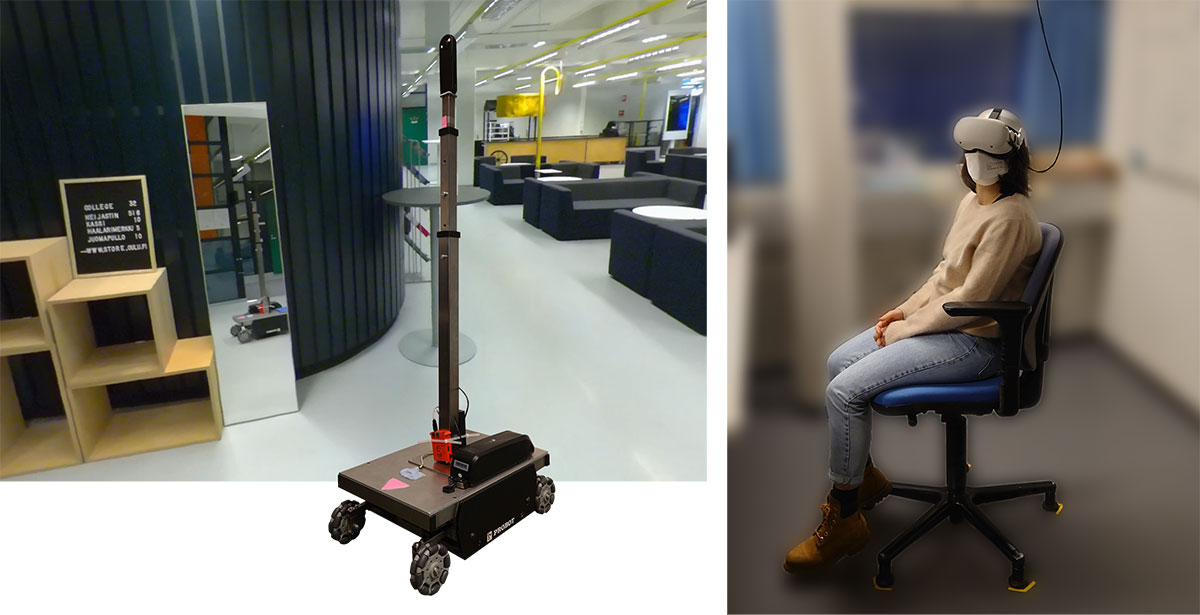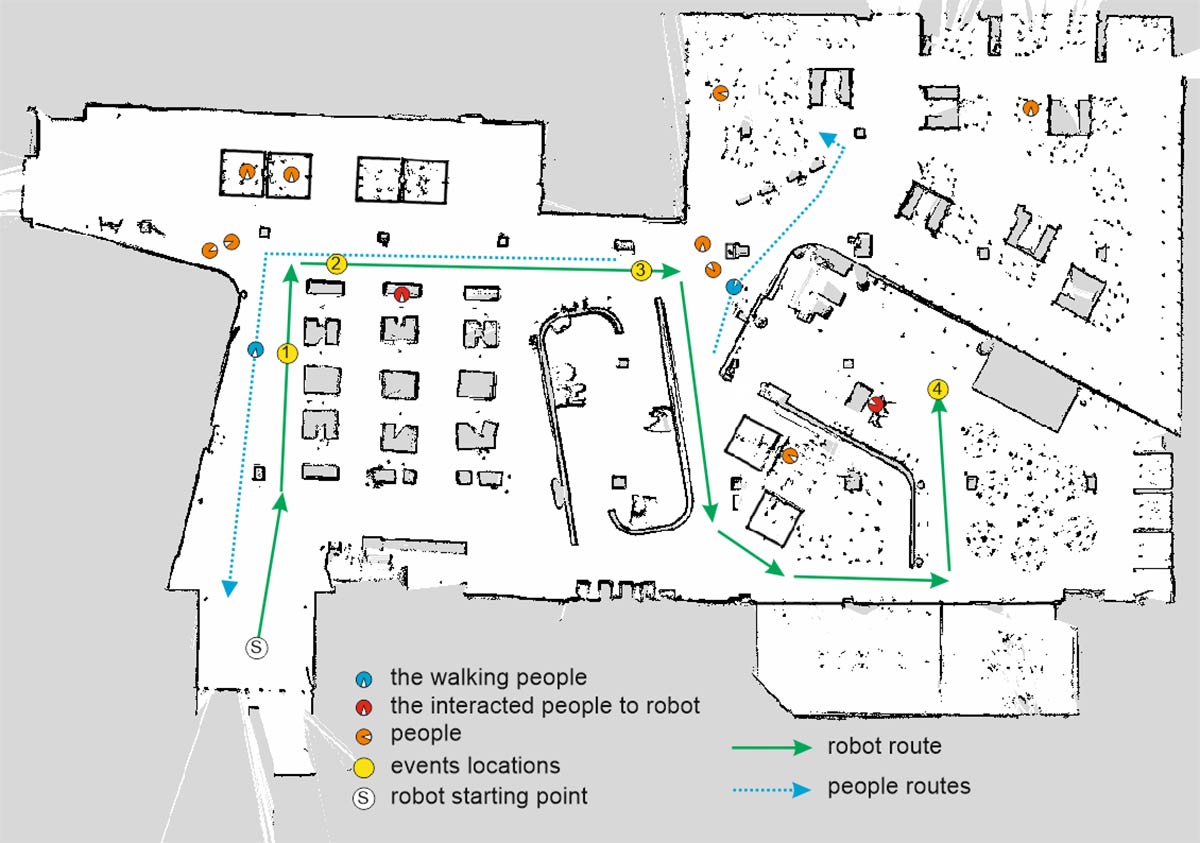Project information
- Category: Research
- Funding: UniOGS Infotech
- Project date: 2021-2022
Immersive Robotics Telepresence
I am proud to present my work on creating a VR telepresence system that enables users to remotely control a robot and interact with people and environments in a distant location. This project was developed as part of my research topic, and it involved collaborating with a team of designers, software developers, and hardware engineers. The goal of the project was to bring the simulated version study into the real robot study, comparing the proposed method (the unwound rotations) with coupled rotations and analyzing the users' experiences.
The VR telepresence system consisted of a custom-built robot equipped with a 360-degree camera and a VR headset that provided the user with a live/recorded feed of the robot's surroundings.
The robot was controlled using an RViz & custom-designed interface that allowed users to move, adjust the camera angle, and interact with others at the remote site.
The system was built using Unity 3D, C#, and ROS2 (Robot Operating System), and it was deployed on a Windows & Linux-based server. We faced several technical challenges during the development of the system, such as ensuring low-latency communication between the robot and the server, synchronizing the initial time between video feed and robot orientation, reducing image vibrations, and optimizing the performance of the system on different hardware configurations.
The user experience of the VR telepresence system was designed to be less motion sickness, more comfortable, intuitive, and immersive.
Users would first put on the VR headset and see a video feed of the robot's surroundings.
Afterward, users were asked to answer the questionnaires regarding their comfort and experience.
Users reported feeling fully immersed in the remote site and having a strong sense of presence.
Overall, the VR telepresence project was a challenging but rewarding experience that allowed me to apply my skills in robotics and VR to create a system with real-world impact.
The project taught me the importance of collaboration and iteration in the development of complex systems, and it demonstrated the potential of VR telepresence as a tool for remote communication and collaboration.
I am proud to include this project in my professional portfolio as an example of my technical and creative abilities.




